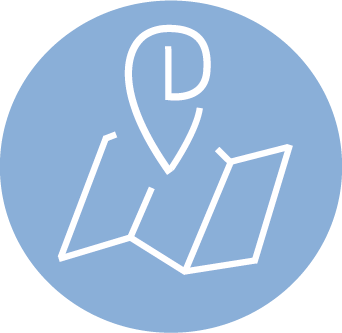Topkapi Palace was built between 1460-1478. It bears traces of the nomadic culture peculiar to the Turks.
When the dynasty began to move to Dolmabahçe in the mid-1800s, Topkapı lost its political importance.
In April 1924, this wonderful building, which had witnessed countless important events over the centuries, was opened to the public as a museum by the Former President of the Republic of Turkey Gazi Mustafa Kemal Atatürk (1881-1938).
There are 10 places that we recommend you visit in Topkapı Palace, which is separated from the rest of the city by the Sur-i Sultani, (or the Sultan's Walls) and the walls from the Byzantine period (330 - 1453). These include The Justice Tower, right next to the Adalet Pavilion, which was first built in wood during the reign of Mehmed the Conqueror (1432-1481).
During the four centuries (5th century-9th century) that the Sultans lived in Topkapı Palace, the Justice Tower was used to ensure the security of the council meetings held in Kubbealtı with the eunuchs keeping watch in the tower 24 hours a day.
The Sacred Relics (considered sacred according to the religion of Islam) which Yavuz Sultan Selim (1469-1520) ordered to be transported to Istanbul after the conquest of Egypt in 1517, are kept under protection. They are also a must-see.
Among the Sacred Relics that have been carefully preserved for over 500 years, (since 1517). There are many items belonging to the İslamic Religious leader Mohammed (570-632) such as his sandals, footprints, seals, and swords.
The Palace Kitchens built on a hill called "Olive Garden" in the Eastern Roman times (5th century) sheds light on the changes in Ottoman cuisine culture over the past four centuries.
Matbah-ı Amire (the kitchen) has a unique management system with a complex which includes sections such as Has Kitchen, Kushane Cuisine, Valide Sultan Cuisine.
The Harem is the most mysterious part of Topkapı Palace, the most fascinating with its architectural details. It has approximately 400 rooms, many of them added by Ottoman architect Mimar Sinan (1490-1588). The construction of Topkapı Palace started in 1465, 12 years after the conquest of Istanbul (1453), by the order of Fatih Sultan Mehmet. Although the Palace, which was built on the old Byzantine ruins in Sarayburnu, was completed in 1478, it continued to expand, with new bits and pieces added until the 19th century.
The exact year in which the Harem, that is, the sultan's mother, wives, children, and concubines, moved to Topkapı Palace is still unknown, but it seems to date back to 1578 and the name of Murat III is inscribed above the Arabalar Gate. The Harem lived in Topkapı Palace until it was moved to Dolmabahçe Palace in 1853. Although some historians have suggested that Suleiman the Magnificent (1520-1566) lived in the Harem, this claim has never been fully confirmed.
-Hagia Irene Church
Hagia Irene, which was built at the beginning of the 4th century on the ruins of temples from the Roman period, is very similar to Hagia Sophia in terms of architecture.
However, unlike its flamboyant counterpart, it attracts the attention of history lovers as a work that has managed to preserve its function after the Ottoman domination of Istanbul. In fact, from this point of view, it is the only structure in the ancient city spread over two continents.
The church, was preserved in accordance with its original design due to the fact that it is located inside the Sur-ı Sultani and due to the direct order of the Sultan of the Ottoman Empire Fatih, II(1432-1481). It was converted into a museum during the reign of Sultan of the Ottoman Empire Ahmed (1590-1617).
The Antiquities and Ancient Weapons collections, which were created with objects collected from different parts of the empire until 1875, are exhibited here. And you should definitely see these other parts
- Supply Room
- III. Ahmed Library
- IV. Courtyard
- Baghdad Mansion
You should also see the Spoonmaker's Diamond in the external treasures section.
The Spoonmaker's Diamond' is 89 carats, surrounded by 49 double rows of large diamonds. It is not known how the 'Kaşıkçı Diamond' got into the Ottoman treasury and how it got its name, but it is thought that it is because it resembles a spoon.

- Monday:
-
09:00 - 18:00
- Tuesday:
- Closed
- Wednesday:
-
09:00 - 18:00
- Thursday:
-
09:00 - 18:00
- Friday:
-
09:00 - 18:00
- Saturday:
-
09:00 - 18:00
- Sunday:
-
09:00 - 18:00









